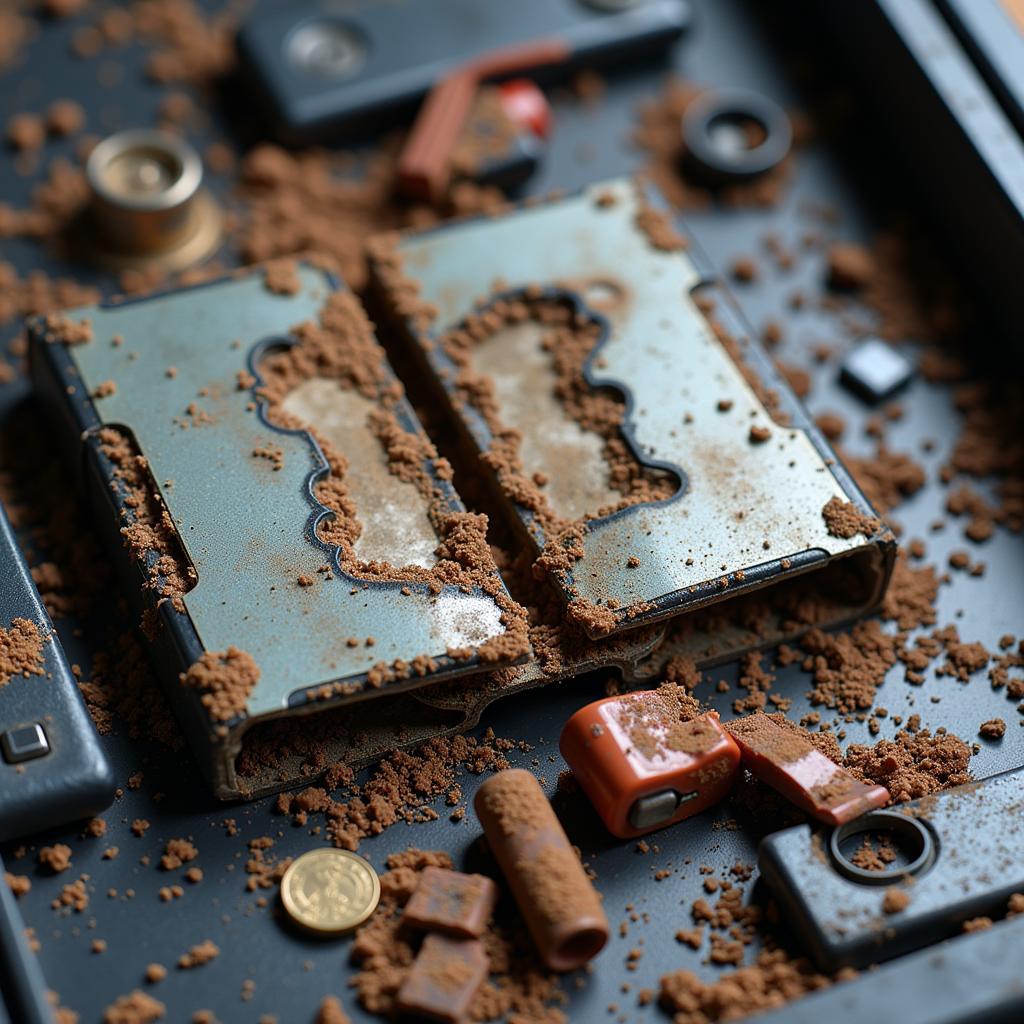A bad battery cell can bring your vehicle to a screeching halt. Understanding the symptoms, diagnosis, and solutions for this issue can save you time, money, and frustration. This guide provides a comprehensive overview of everything you need to know about bad battery cells, from how to identify them to the best course of action for repair or replacement.
If your car won’t start even with a new battery, it might be a deeper issue. Check out our guide on brand new battery car still wont start.
What is a Bad Battery Cell and Why Does it Happen?
A car battery isn’t a single unit of power; it’s composed of multiple individual cells, typically six, working together. Each cell contributes to the overall voltage output of the battery. A bad battery cell occurs when one or more of these cells fail to hold a charge, effectively diminishing the battery’s overall performance. This can happen due to various reasons, including sulfation (build-up of lead sulfate crystals), internal shorts, overcharging, extreme temperatures, and simply age.
 Bad Battery Cell Internal Damage
Bad Battery Cell Internal Damage
Symptoms of a Bad Battery Cell
How do you know if you’re dealing with a bad battery cell? There are several tell-tale signs:
- Slow Cranking: The engine cranks slowly or struggles to start, especially in cold weather.
- Dim Headlights: Headlights appear dimmer than usual, especially when the engine is off.
- Low Battery Voltage: A voltmeter reading significantly lower than 12.6 volts with the engine off indicates a problem.
- Swollen Battery Case: A bulging or deformed battery case suggests internal damage and a potential bad cell.
- Rotten Egg Smell: A sulfurous odor emanating from the battery can be a sign of a damaged cell.
- Dashboard Warning Lights: The battery or check engine light might illuminate, signaling a potential issue.
Experiencing a persistent battery drain in your BMW X5? Our guide on x5 battery drain offers targeted solutions.
Diagnosing a Bad Battery Cell
While some symptoms point towards a general battery issue, pinpointing a bad cell requires more specific testing. Here are some common diagnostic methods:
- Battery Load Test: This test measures the battery’s ability to hold a charge under load.
- Hydrometer Test: This test measures the specific gravity of the electrolyte in each cell, indicating its state of charge.
- Multimeter Test: This measures the voltage of each individual cell to identify any discrepancies.
Can You Fix a Bad Battery Cell?
Unfortunately, individual bad battery cells are rarely repairable. In most cases, the entire battery will need to be replaced. Attempting to repair a single cell is often impractical and may not provide a long-term solution.
“Trying to revive a single dead cell in a battery is like trying to patch a hole in a sinking ship. It might buy you some time, but eventually, the whole thing goes down,” explains John Miller, a seasoned automotive electrical engineer with over 20 years of experience.
Preventing Bad Battery Cells
While you can’t completely eliminate the possibility of a bad battery cell, you can take steps to prolong your battery’s life and minimize the risk:
- Regular Battery Testing: Have your battery tested regularly, especially during extreme temperatures.
- Proper Charging: Avoid overcharging or deep discharging your battery.
- Clean Battery Terminals: Keep the battery terminals clean and free of corrosion.
- Limit Short Trips: Short trips prevent the battery from fully recharging.
- Park in Shade: Extreme heat can damage battery cells.
If you suspect something is constantly draining your car’s battery, our article on something keeps draining my car battery could provide valuable insights.
Replacing a Bad Battery
Replacing a car battery is a relatively straightforward process, but it’s important to follow safety precautions and proper procedures.
- Disconnect the Negative Terminal: Always disconnect the negative terminal first to prevent short circuits.
- Disconnect the Positive Terminal: Next, disconnect the positive terminal.
- Remove the Battery Hold-Down: Remove any clamps or brackets holding the battery in place.
- Install the New Battery: Place the new battery in the tray and secure it.
- Connect the Positive Terminal: Connect the positive terminal first.
- Connect the Negative Terminal: Finally, connect the negative terminal.
Are you dealing with battery drain issues in your Fiat Doblo? Explore our troubleshooting guide on fiat doblo battery drain.
Conclusion
A bad battery cell can significantly impact your vehicle’s performance and reliability. By understanding the symptoms, diagnosis, and solutions for this common issue, you can take proactive steps to maintain your battery and address problems promptly. Replacing the battery is typically the most effective solution. Remember, regular maintenance and proper care are crucial for extending your car battery’s lifespan and preventing unexpected breakdowns.
FAQ
-
How long does a car battery last? Typically, car batteries last between three and five years.
-
Can a bad alternator cause a bad battery cell? A faulty alternator can contribute to battery damage, including bad cells, by overcharging or undercharging.
-
How much does a new car battery cost? The cost varies depending on the type and size of the battery, but typically ranges from $50 to $200.
-
Can I jump-start a car with a bad battery cell? You might be able to jump-start the car temporarily, but it’s not a long-term solution.
-
What are the signs of a failing car battery? Signs include slow cranking, dim headlights, and low voltage readings.
-
Is it dangerous to drive with a bad battery cell? Driving with a failing battery can lead to unexpected breakdowns and potentially damage other electrical components.
-
How can I test my car battery at home? You can use a multimeter to test the battery’s voltage or a load tester to check its capacity. If your Tesla battery is completely dead, specialized knowledge is needed, as discussed in our tesla battery completely dead guide.


